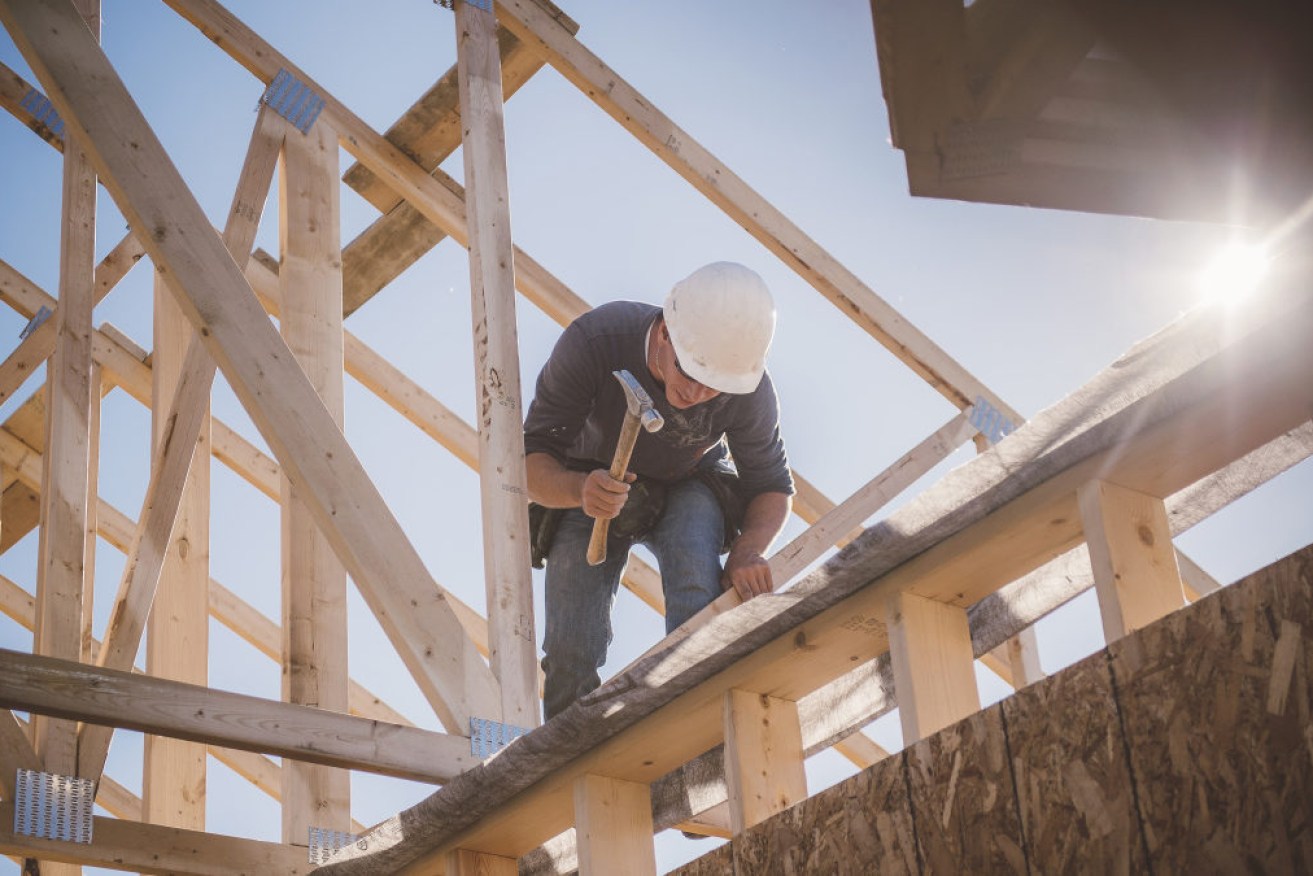Social housing boost could reverse construction sector’s devastating downturn


Salvaged softwood from Kangaroo Island will be used to ease an acute shortage of building timber. Photo: Getty
The federal government could prevent housing construction from “falling off a cliff” and house more vulnerable Australians with a renewed social housing drive, a leading community housing group says.
And the group said a scheme replicating the Rudd government’s post-GFC social housing scheme could provide more targeted support than the “tradie-led” HomeBuilder program.
PowerHousing’s Australian Affordable Housing Report, released on Wednesday, forecasts new housing delivery could more than halve the previous 2018 high over the coming 12 months.
The group estimates an average three-bedroom home build engages 43 construction trade and sub-trade workers.
That means a downturn could result in 4.75 million less trade engagements over 12 months, according to its worst-case modelling.
However, the PowerHousing report argues that renewed investment to boost social and community housing supply would do far more than just act as a “shock absorber” for the construction sector.
“The need for additional affordable and social housing is real and urgent with significant waiting lists for public housing [and] will continue to grow,” the report’s authors wrote.
Tweet from @cassandragoldie
Prior to the pandemic, the Australian Institute of Health and Welfare estimated 200,000 Australians were on social housing waitlists.
But with more than 420,000 owner-occupier mortgages deferred and nearly one million jobs lost during the pandemic, the group urged the Morrison government to address social housing construction in its October federal budget – well before the housing downturn’s trough.
“Stabilising beyond immediate six month [stimulus] phase in September to create long term stabilisation is where Government’s best efforts can be placed now,” the PowerHousing report reads.
“This requires longer term, 2-5 year thinking for people needing subsidised wage and housing if their job has been temporarily lost to the economic downturn.”
Federal Treasurer Josh Frydenberg flagged in May that adding to the government’s existing $100 billion 10-year pipeline of infrastructure works would be a key part of his plan to restart the economy.
What a social housing push could do for the economy
Hal Pawson, a professor at UNSW’s City Futures Research Centre, told The New Daily including social housing in a post-pandemic infrastructure spree would give the government access to short-term construction that can easily be “switched on and off.”
Tweet from @Kon__K
That’s because community housing providers have already scoped out the land and are more capable of meeting demand than a decade ago.
Professor Pawson said the only barrier now is government funding.
“Social housing is attractive because it’s relatively simple to do, there’s a certain amount of government-owned land and beyond that, it may actually be a very good time to acquire land now,” Professor Pawson said.
He said the Community Housing Industry Association’s SHARP proposal, which is similar in design to the Rudd government’s 2008 Social Housing Initiative, could be one such solution.
“The greatest need would be in the middle and inner suburbs, but that’s where it would be most expensive to build and where land is relatively scarce,” Professor Pawson said.
“But the geography of [a social housing scheme] is important so it doesn’t just get spent in the places where land and construction can be done cheapest.
“Opportunity does matter because you do want to get projects off the ground quickly, especially now, but there’s no point building ghost towns away from public transport nodes where it would be hard to fill them.”
Australian Council of Social Services CEO Dr Cassandra Goldie told The New Daily she supports a $7 billion government housing investment that would see 30,000 dwellings constructed.
“The affordable rents, security of tenure, and other supports available to financially vulnerable people in social housing reduces their risk of homelessness by more than half,” Dr Goldie said.
Tweet from @unimelb
“Direct public investment in social housing is also a cost effective way to boost growth in jobs and incomes. For every dollar invested, it is estimated to boost GDP by $1.30.”
Professor Pawson said addressing the gulf in social housing supply could not only provide much-needed accommodation but feature as a more reliable market stabiliser than HomeBuilder, he said.
HomeBuilder increasing prices of renovations
Suburbanite principal Anna Porter said that anecdotally, renovation-ready properties appear to have been snapped up faster by younger families since HomeBuilder was announced.
Small to midsize builders in particular were becoming busier as the number of new renovations meeting the required $150,000 minimum spend threshold rise, she said.
But she noted one glaring downside.
“We’re starting to see quotes come through that are getting quite expensive, and that’s a reflection of [tradies] having more work,” Ms Porter told The New Daily.
“For example, a client of ours was looking at getting a kitchen renovation and new flooring put through their property, and they had quotes that ranged from $60,000 to $180,000 for the same job, and not to say it’s justifiable, but there’s definitely a shift in pricing behaviour.”
Beyond the scheme’s expected acceleration of larger projects through the pipeline, Ms Porter said it is unlikely to create dramatic upticks in overall demand for renovation work.








